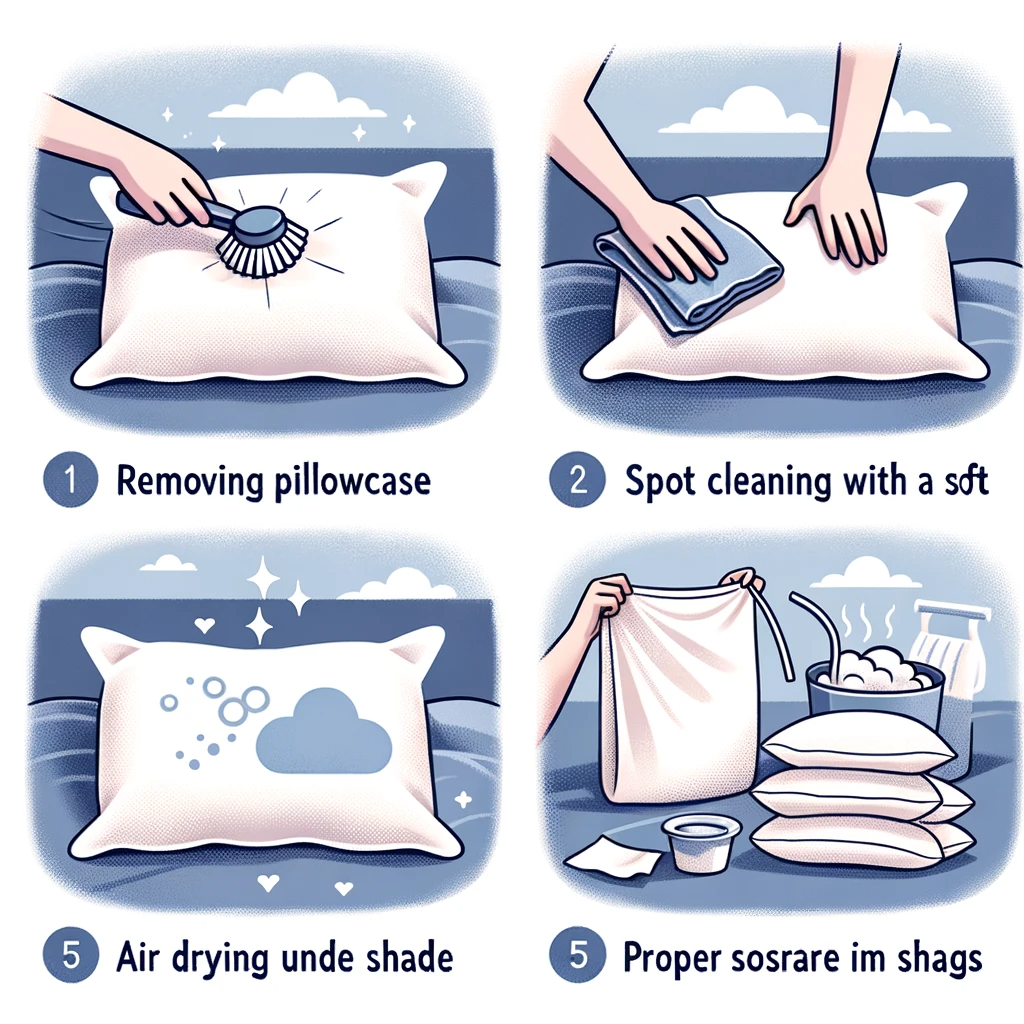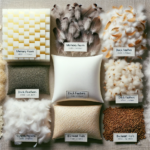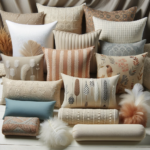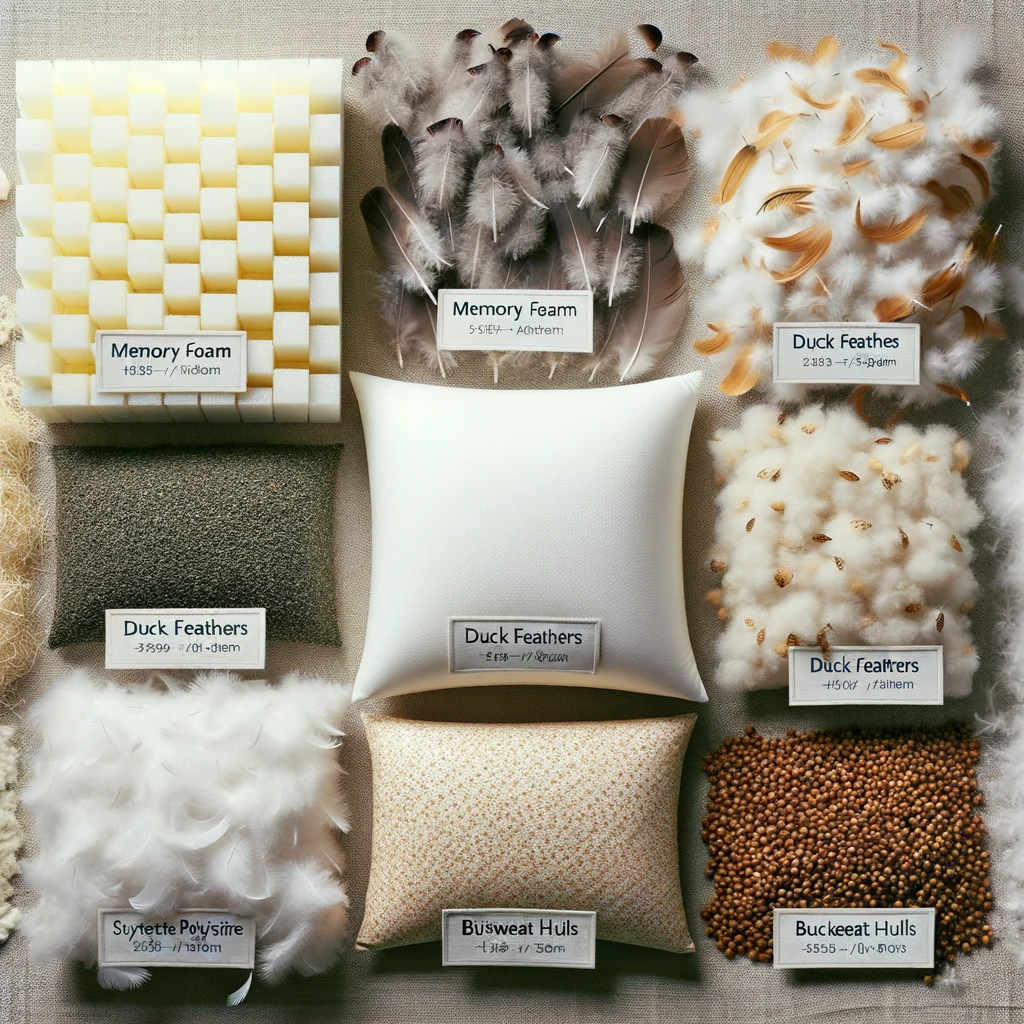Introduction to Pillow Care and Cleaning

Pillows are often an overlooked aspect of our sleep routine, yet they play a crucial role in providing comfort, support, and maintaining overall sleep quality. Proper care and cleaning of pillows not only ensure hygiene but also contribute to their longevity. By implementing a regular maintenance routine and following appropriate washing instructions, you can extend the lifespan of your beloved pillows while creating a healthier sleeping environment.
Importance of Pillow Care for Hygiene and Longevity
Hygiene is an essential aspect when it comes to pillow care. Pillows accumulate sweat, dead skin cells, body oils, and even dust mites over time.
Neglecting pillow care can lead to unpleasant odors, stains, and the potential development of allergens that may impact your health negatively. By maintaining cleanliness through proper care rituals such as regular fluffing or using protective covers or cases, you can minimize the risk of allergies or respiratory issues caused by unclean pillows.
Besides hygiene considerations, caring for your pillows also contributes to their longevity. High-quality pillows can be a significant investment, so it is important to protect that investment by adopting proper maintenance routines.
Regularly fluffing your pillows helps maintain their loftiness and support over time. Additionally, following specific cleaning instructions suitable for different types of pillows ensures that they remain in optimal condition without losing their shape or functionality.
Common Misconceptions about Pillow Care
Misconceptions abound when it comes to caring for pillows. One common myth is that washing pillows will cause them to lose their shape or become damaged. While this misconception might hold some truth for certain delicate pillow materials (e.g., memory foam), many types – such as down or synthetic fiber-filled pillows – can be safely washed if done correctly.
Another prevalent misconception is that pillowcases alone can protect pillows from accumulating dirt and stains. While pillowcases do offer a layer of protection, they are not impervious to sweat, body oils, or spills.
Without regular cleaning and maintenance, even the most luxurious pillowcase cannot prevent the gradual buildup of allergens and odors. Thus, it is essential to combine the use of protective covers or cases with a proper cleaning routine to ensure both cleanliness and longevity.
Understanding Different Pillow Types
Overview of Various Pillow Materials
When it comes to pillows, there is an abundance of materials available in the market, each offering unique qualities and benefits. Understanding the differences between these pillow materials is crucial to ensure proper care and cleaning. Let’s explore some common pillow materials:
1. Down: Down pillows are filled with the soft and fluffy feathers found beneath the outer feathers of ducks or geese. Known for their luxurious feel, down pillows offer exceptional comfort and excellent insulation properties.
They provide gentle support while adjusting to your head shape. However, it’s important to note that down pillows require special care due to their delicate nature.
2. Memory Foam: Memory foam pillows are made from viscoelastic polyurethane foam that molds to the shape of your head and neck when you lie on them. This material offers excellent support by evenly distributing pressure points, ensuring a restful sleep experience.
Memory foam pillows also have hypoallergenic properties as they resist dust mites and allergens.
3. Synthetic: Synthetic or polyester-filled pillows are popular due to their affordability and durability.
These pillows are often hypoallergenic, making them suitable for individuals with allergies or sensitivities. Synthetic fillings can mimic the softness of down while being more resilient against flattening over time.
Identifying the Specific Type of Pillows You Own
To properly care for your pillows, you must first identify the specific type you own in order to follow appropriate maintenance guidelines:
1. Check Labels: Most pillows come with labels indicating their material composition and care instructions. Look for tags attached to the pillow or check packaging details if you still have them.
2. Visual Inspection: Examine your pillow’s appearance and texture characteristics:
Down Pillows: Typically have a puffy appearance with visible feathers poking out.
Memory Foam Pillows: They have a distinct molded shape that slowly regains its original form after pressure is released.
Synthetic Pillows: Often feel fluffy, lightweight, and may have a polyester cover.
3. Consider Purchase Information: If you bought the pillows recently and remember their type, it can help in determining the material. Identifying your pillow type is crucial as it allows you to tailor your care routine accordingly, ensuring maximum comfort and longevity.
Regular Maintenance Routine for Pillows

Fluffing and Reshaping Pillows Daily
When it comes to maintaining the comfort and longevity of your pillows, regular fluffing and reshaping plays a crucial role. Over time, pillows tend to flatten due to the weight of our heads and the pressure exerted on them during sleep. By fluffing your pillows daily, you can restore their loft and bounce, ensuring optimal support for your head, neck, and shoulders.
Fluffing is a simple yet effective technique that involves gently shaking or kneading the pillow to redistribute the filling evenly. Start by holding each end of the pillow with both hands and give it a few brisk shakes to loosen up any compacted areas.
Then, using your hands or fingers, knead the pillow in a circular motion while applying gentle pressure. This motion helps to break up clumps and restore the pillow’s original shape.
Benefits of Fluffing to Maintain Loft and Support
Regularly fluffing your pillows offers several benefits beyond just restoring their plushness. Firstly, it helps maintain their loft—referring to how plump or full they appear—which ensures proper alignment of your spine while you sleep.
A flattened pillow can lead to uncomfortable positions that strain neck muscles. Moreover, fluffing prevents uneven wear by redistributing the filling throughout the pillow evenly.
This helps extend its lifespan as well as maintain consistent support levels across its surface. By maintaining optimal loft and support through daily fluffing, you can also mitigate potential discomfort caused by inadequate cushioning during sleep.
Techniques for Fluffing Different Types of Pillows
Different types of pillows require specific techniques when it comes to fluffing them effectively:
For down or feather-filled pillows: Hold both ends firmly before giving them a good shake with an upward motion.
This action helps loosen the feathers and revives their loftiness. Then, gently knead the pillow to ensure even distribution of filling.
Memory foam pillows: Due to their unique properties, memory foam pillows do not require traditional fluffing as they conform to your head and neck shape. Instead, reshape them by using your hands to press and squeeze the pillow, allowing it to regain its original form.
Synthetic fiber-filled pillows: Start by giving these pillows a gentle squeeze along the sides, which helps redistribute the synthetic fibers inside. Follow this up with a series of punches or strikes with flat hands on all sides of the pillow, ensuring an even distribution of filling.
Protecting Pillows with Pillowcases and Covers
Using pillowcases and covers is essential for maintaining cleanliness and prolonging the lifespan of your pillows. These protective layers shield them from common spills, stains, dust mites, allergens, and body oils that can compromise their hygiene.
When choosing pillowcases or covers for your beloved pillows opt for fabrics that offer both breathability and comfort. Natural materials such as cotton or bamboo are excellent choices due to their ability to promote air circulation while providing a soft touch against your skin.
These fabrics also allow moisture to evaporate easily for a more comfortable sleep experience. For individuals with allergies or sensitivities, hypoallergenic covers are highly recommended.
These covers act as an additional barrier against allergens such as dust mites and dander that can cause allergic reactions or exacerbate existing conditions. Hypoallergenic covers are typically made from tightly woven fabrics that prevent allergens from penetrating through while still allowing proper airflow for a fresh sleeping environment.
Washing Instructions for Different Pillow Types
Down Pillows: Nurturing Feathered Comfort
When it comes to down pillows, ensuring they receive the proper care is essential for preserving their luxurious comfort. Before diving into the washing process, it is crucial to prepare these pillows adequately. Start by examining the pillow for any stains or spills.
To tackle these blemishes, gently blot them with a damp cloth and a mild detergent specifically designed for delicate fabrics. Remember, vigorous rubbing may worsen the stain or cause damage to the pillow’s exterior.
Once you have addressed any spots, it’s time to proceed with machine-washing your down pillows safely. Begin by placing two pillows in your washing machine to maintain balance during the cycle.
Make sure to adjust the water temperature setting to warm or cool rather than hot, as excessive heat can damage the delicate feathers within. Select a gentle cycle and add a small amount of mild liquid detergent formulated for down-filled items.
Memory Foam Pillows:Gentle Care For Your Contouring Companion
Memory foam pillows provide unparalleled support and conform perfectly to your head and neck contours. When it comes to cleaning them, it is crucial not to compromise their structural integrity while attempting stain removal or deep cleaning. Spot cleaning is typically sufficient for addressing minor stains or spills on memory foam pillows.
To spot clean a memory foam pillow, start by creating a solution of warm water mixed with a mild liquid detergent in a spray bottle. Spray this solution onto a clean cloth until it is slightly damp (avoid saturating).
Gently dab at the stained area without rubbing vigorously, as excessive pressure may disrupt the foam’s cohesive structure. Deep cleaning can be more challenging due to memory foam’s absorbent quality and its aversion to excessive moisture exposure.
However, if the pillow requires a thorough cleanse, consider using a vacuum cleaner with a soft brush attachment to remove surface debris. Avoid using water-based cleaning methods on the entire pillow, as this can lead to irreparable damage.
Special Considerations for Specific Pillow Users
Pillow care tips for individuals with allergies or asthma
Living with allergies or asthma can be challenging, especially when it comes to maintaining a clean and allergen-free sleeping environment. For those who suffer from these conditions, paying extra attention to pillow care is essential. Firstly, it is advisable to choose pillows made from hypoallergenic materials such as natural latex or synthetic fibers that are resistant to dust mites and other common allergens.
Regular washing of pillowcases and covers in hot water (above 130°F) helps eliminate allergens effectively. Additionally, using a high-quality pillow protector will create an extra barrier against dust mites and other irritants.
Choosing hypoallergenic materials
When it comes to selecting pillows suitable for individuals with allergies or asthma, opting for hypoallergenic materials is of utmost importance. Hypoallergenic pillows are specifically designed to minimize the risk of triggering allergic reactions by repelling common allergens.
Natural latex pillows are an excellent choice as they are antimicrobial, mold-resistant, and naturally resistant to dust mites. Synthetic fiber-filled pillows are another viable option since they tend to be hypoallergenic and easily washable.
Frequent washing routine
Maintaining a regular washing routine is vital not only for individuals with allergies but also for general hygiene purposes. It is recommended that hypoallergenic pillows should be washed every 2-3 months while non-hypoallergenic options should be washed at least once every six months.
When washing your pillows, always follow the manufacturer’s instructions carefully regarding water temperature and detergent selection. After washing, thoroughly dry the pillows in a well-ventilated area or using low heat in a dryer to prevent moisture buildup that can lead to mold growth.
Caring for decorative throw pillows
While decorative throw pillows may not be primarily used for sleeping, they still require care and maintenance to keep them looking their best. Before cleaning, check the manufacturer’s instructions or label for specific care recommendations. Many decorative throw pillows come with removable covers that can be machine-washed, making it easier to keep them clean.
For pillows without removable covers, spot-cleaning with a mild detergent and a clean, damp cloth is the safest option. Additionally, avoid exposing decorative throw pillows to direct sunlight for extended periods as this can cause fading or discoloration.
Conclusion

Caring for and cleaning your pillows is an important aspect of maintaining a healthy and comfortable sleep environment. By understanding different pillow types and following proper care routines, you can extend the life of your pillows while ensuring hygiene and comfort.
Whether you have allergies or asthma or simply want to preserve the beauty of decorative throw pillows, implementing these tips will contribute to better sleep quality and overall well-being. Embrace the power of pillow care – it’s time to rest easy knowing that your beloved pillows are in excellent condition!









